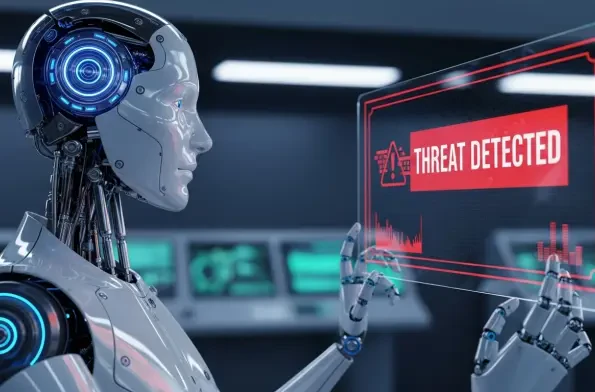Imagine a world where cyber threats evolve at a pace that outstrips human capacity to respond, with malware attacks increasing in sophistication every single day. In this high-stakes digital battlefield, Microsoft has unveiled a game-changing tool called Project Ire, an autonomous AI agent designed to reverse-engineer malware with unprecedented precision and accuracy. Launched earlier this year, this technology promises to transform how threats are detected and mitigated, tackling a critical challenge in cybersecurity—scalability. This review dives deep into the capabilities, performance, and implications of this innovative solution, exploring whether it truly stands as a beacon of hope against escalating digital dangers.
Unveiling a New Era in Threat Detection
Project Ire emerges as a pioneering force, leveraging artificial intelligence to independently analyze software binaries and uncover malicious intent. Unlike traditional methods that rely heavily on human analysts, this AI agent automates the intricate process of reverse-engineering, a task that often demands hours of meticulous effort. Its arrival signals a shift in the cybersecurity landscape, addressing the overwhelming volume of threats that flood systems daily.
The core mission of this tool is to replicate and even surpass human expertise in identifying malware. By operating autonomously, it aims to bridge the gap created by the global shortage of skilled professionals, a problem that has long plagued the industry. Its relevance cannot be overstated, especially as cybercriminals deploy increasingly complex tactics to evade detection.
Core Features and Technological Edge
Autonomous Code Deconstruction
At the heart of Project Ire lies its ability to dissect complex code within a secure, sandboxed environment. This mechanism allows the AI to identify harmful elements without any human intervention, a feat that marks a significant leap forward. Initial testing reveals an impressive precision rate of 98%, coupled with a recall score of 83%, showcasing its potential to rival seasoned analysts.
This autonomous capability not only accelerates the detection process but also enhances efficiency in threat analysis. By mimicking human decision-making, the system can prioritize critical findings, ensuring that dangerous malware is flagged swiftly. Such performance metrics highlight its promise as a reliable frontline defense.
Integration with Cutting-Edge Tools
Project Ire sets itself apart by integrating with established open-source frameworks like Ghidra, which aids in decompiling executables and simulating runtime behaviors safely. This full-spectrum approach goes beyond the limitations of traditional antivirus software, which often depends on outdated pattern-matching techniques. The AI’s adaptability shines when handling previously unseen files, a challenge that frequently stumps conventional systems.
Moreover, its design allows for seamless updates and enhancements, ensuring it remains agile against emerging threats. This technological synergy positions the tool as a versatile asset, capable of evolving alongside the ever-changing tactics of cybercriminals. Its forward-thinking architecture underscores a commitment to staying ahead in the cybersecurity race.
Performance in Real-World Scenarios
Project Ire has demonstrated remarkable prowess in practical applications, tackling a wide array of malware, from trojans to ransomware and even advanced persistent threats. During controlled demonstrations, it successfully generated detailed reports that pinpointed vulnerabilities with striking accuracy. These insights proved invaluable for crafting rapid response strategies.
Equally impressive is its ability to author detection rules for platforms like Microsoft Defender, enabling automatic blocking of threats. This feature significantly cuts down response times, a crucial factor when dealing with fast-spreading attacks. Such capabilities reduce the strain on cybersecurity teams, allowing them to focus on strategic priorities rather than repetitive tasks.
The impact extends across industries, from finance to healthcare, where data breaches can have catastrophic consequences. By automating labor-intensive processes, the AI offers a scalable solution that empowers organizations to bolster their defenses. Its real-world effectiveness marks it as a vital tool in safeguarding sensitive digital assets.
Challenges and Areas for Improvement
Despite its strengths, Project Ire is not without limitations, particularly as a prototype still in refinement. Highly obfuscated malware or entirely novel threats can occasionally evade its detection, revealing gaps in its current framework. These shortcomings emphasize the need for continuous development to keep pace with adversarial ingenuity.
Another concern lies in its reliance on the quality of training data. If the datasets lack diversity or depth, the AI’s effectiveness could be compromised, especially against tactics designed to deceive machine learning models. Addressing this dependency will be critical to ensuring long-term reliability.
Ethical dilemmas also surface with such automation, particularly around accountability for errors. The debate over human oversight versus full autonomy remains unresolved, with industry voices advocating for a balanced approach. Striking the right equilibrium between efficiency and responsibility poses a significant challenge for future iterations.
Future Outlook in Cybersecurity Innovation
Looking ahead, Microsoft aims to enhance Project Ire for integration into broader security suites, potentially redefining enterprise defense mechanisms. Plans include refining its algorithms to better handle obscure threats, a step that could solidify its standing as an industry benchmark. Such advancements may also pave the way for faster threat intelligence sharing among global networks.
The long-term vision includes democratizing reverse-engineering expertise, making advanced analysis accessible to smaller organizations lacking dedicated teams. This could level the playing field, ensuring that even resource-constrained entities can mount robust defenses. The ripple effects of such accessibility might inspire a wave of similar innovations.
Furthermore, its role in shaping cybersecurity strategies over the next few years, from 2025 to 2027, appears promising. As a catalyst for automation, it could encourage collaborative efforts across tech giants and startups alike. The potential to influence global policies on digital security underscores its far-reaching implications.
Reflecting on a Transformative Tool
Looking back, Project Ire stood out as a groundbreaking prototype that redefined malware analysis with its exceptional accuracy and autonomous operation. Its capacity to alleviate the burden on cybersecurity professionals while maintaining high precision was a testament to Microsoft’s innovative spirit. Yet, the journey revealed hurdles, from handling novel threats to navigating ethical concerns, which underscored the need for cautious progress.
Moving forward, the focus should shift to actionable enhancements, such as bolstering its resilience against adversarial tactics through diverse training datasets. Collaborative industry efforts to establish clear guidelines on AI accountability could address ethical gaps, ensuring trust in automated systems. Additionally, investing in hybrid models that blend human insight with AI efficiency offers a practical path to balance innovation with oversight, setting a sustainable course for the future of digital defense.













